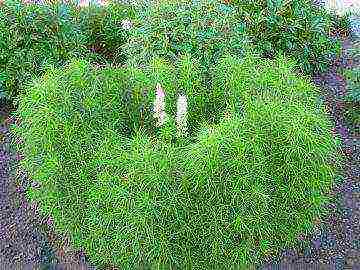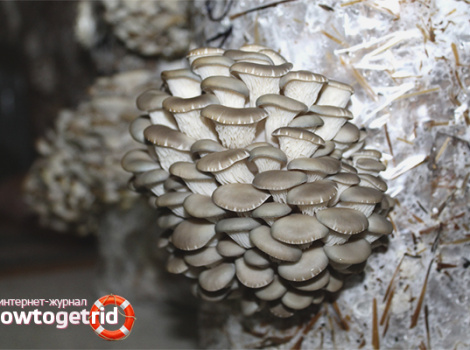Content
- 1 How to breed and raise ducklings for beginners?
- 1.1 Raising and breeding ducklings hen
- 1.2 How can you raise ducklings in an incubator and how long does it take?
- 1.3 Proper maintenance and care
- 1.4 How to feed ducklings: compound feed, mash and vitamins with your own hands
- 1.5 Feeding in the first days of life
- 1.6 What food should be given to individuals from one to three weeks?
- 1.7 How should ducks be fed from one month of age to slaughter?
- 2 How to keep adult ducks at home?
- 3 Feeding and caring for adults
- 4 How to make a diet for ducklings?
- 5 Features of breeding and raising ducklings at home for beginners
- 6 Fattening and keeping on free grazing without reservoirs
- 7 Fattening and keeping on free grazing with a pond
- 8 Feeding meat ducks at home
- 9 Breed selection
- 10 Peking duck
- 11 Indoor
- 12 Duck mulard
- 13 Duck keeping
- 14 Breeding
- 15 Breeding young
- 16 Young growth care
- 17 Feeding
- 18 Duck farm products
- 19 Slaughter of poultry
Duck is a fairly common poultry in a rural backyard. It can often be found in rural areas, especially if there is a body of water there. Ducks are raised for meat. By the age of one month, young animals weigh up to 2.5 kg. An adult drake weighs about 4 kg. In addition, ducks lay up to 120 eggs throughout the year.
In this article, we will talk about breeding and raising ducks at home for beginners. In addition, we will learn how to properly feed ducklings at home, what kind of mash, compound feed, what is their composition.
How to breed and raise ducklings for beginners?
Keeping ducks at home for beginners is not much different from raising chickens or geese. But, there are some nuances that should be considered when breeding this bird. You should definitely dwell on them in more detail. Including how long ducks live.
Raising and breeding ducklings hen
An interesting point is that duck eggs can be placed under a chicken or turkey, and they will hatch eggs, mistaking them for their own. But a duck or goose is unlikely to want to do the same with other people's eggs. So, any of three poultry is chosen as a brood hen - chicken, duck or turkey. Of course, it is better if it is a duck.
Up to 15 eggs are usually placed under the duck if the brood is planned to be obtained in the summer and up to 12 if in the spring. This is due to the ambient temperature. Naturally, more eggs are placed under the turkey, which is explained by its large size, and less under the chicken. The main thing is that all eggs in the clutch are under the hen in order to evenly heat them by the body of the hen.
For the hen, a wreath-shaped nest is made of straw so that the eggs do not roll in different directions. The hen will add the rest of the components (for example, feathers). On the bottom of the nest, if it is located on the floor, put sawdust and chaff.
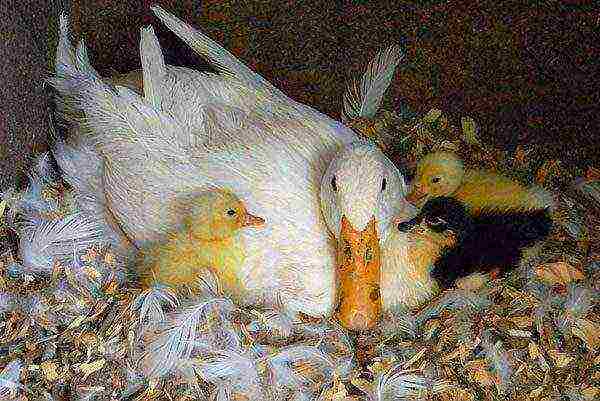 Raising ducklings with a brood hen
Raising ducklings with a brood hen
It is best to make the nest on a small hill and away from direct sunlight, in the darkest part of the house. There is no need to artificially shade this place. If it seems uncomfortable to you, make an impromptu partition.This will separate one nest from the other and create a feeling of extra comfort.
The first brood is obtained as early as 27 days after the start of incubation.
All chicks should hatch in 1 to 2 days. So that the hen does not hush them up, the ducklings are taken to a separate box immediately after birth. To do this, you can take a cardboard box lined with straw and a floor. The normal temperature for them at this time is 30 degrees. Therefore, if the brood turned out in spring, take care of an additional source of heat.
Keep the box, crate or basket where the ducklings are kept dry.
After all the ducklings are born, they are returned to the hen - the duck. Better to do this in the evening. Make sure that the mother duck accepts them, as chicks especially need warmth during this period.
How can you raise ducklings in an incubator and how long does it take?
The main advantage of raising ducklings in an incubator is the ability to get a brood at any time convenient for you. In addition, there is no need to take care of the hen, and the incubator can be made with your own hands. Modern home incubators are equipped with temperature and humidity controls. Therefore, you just have to monitor the process, turn the eggs over (if this is not provided automatically by the design of the incubator) and occasionally open the apparatus for their small short-term cooling and to remove accumulated gases.
Before laying, the incubator is heated by setting the temperature 1-2 degrees higher than necessary for incubating eggs at the very beginning of the process. Besides, it is recommended to make high air humidity. For this, several trays of water are installed on the pallet.
Due to the fact that the shell of duck eggs is stronger than chicken and they are larger in size, somewhat different in chemical composition, the brood appears later.
Duck eggs need more care than chicken eggs and require high humidity for themselves.
In the first week after laying, the temperature in the incubator should be at 38 degrees (the first 3 days - 38.2, the next 4 - 37.8). Humidity is required to be kept at 60%. After two weeks of eggs in the incubator, it is worth opening the incubator door for 30 minutes twice a day, reducing the temperature to 32 degrees. Then the temperature regime is resumed.
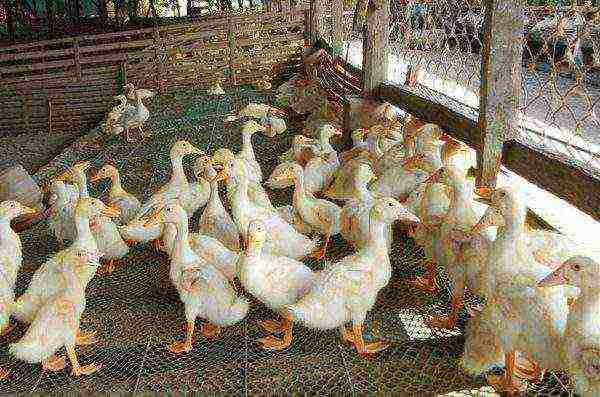 Grown incubator ducks in the paddock
Grown incubator ducks in the paddock
If you have an ovoscope, you need to check the eggs for embryos after 9-10 days. A sharp drop in air temperature must not be allowed. Chicks hatch on the 27-28th day within one or two days. Air humidity is maintained at 55%. After the chicks are dry, they are transferred to a box, basket, box, after putting dry sawdust, chaff, and straw on the bottom.
Install an additional heating source so that the ambient temperature at the litter level does not fall below 28 degrees and the air humidity up to 80%.
Proper maintenance and care
In the first 20 days of life, ducklings need increased attention in relation to compliance with the temperature regime. If they are near the duck, you should not worry about an additional source of heating - the duck itself is able to protect them from low temperatures. In the first week of life, the temperature should be maintained at the litter level of 27-30 degrees; in the second week - 23-26, in the third - 19-22. Then they get used to the natural air temperature.
As said before, the litter must be dry. Otherwise, the ducklings freeze and get sick.
The duration of daylight hours at the beginning of life should be at the level of 20 hours with a gradual decrease to 12 hours at the age of one month.
Ducklings with a duck in the morning and afternoon are allowed to walk after five days of age. In the evening, they are closed in a room with additional heating, if the air temperature is below the above marks. And after three weeks of age, you can even leave them outside the room around the clock.
The presence of a reservoir is very good for raising ducklings. With an adult bird, they are released into the water after three weeks of life. Independently - after a month. You can keep ducklings in cages for the first two weeks. Then they are given more freedom. That is, partly to walk. Monthly young growth is transferred entirely to the content of the walk.
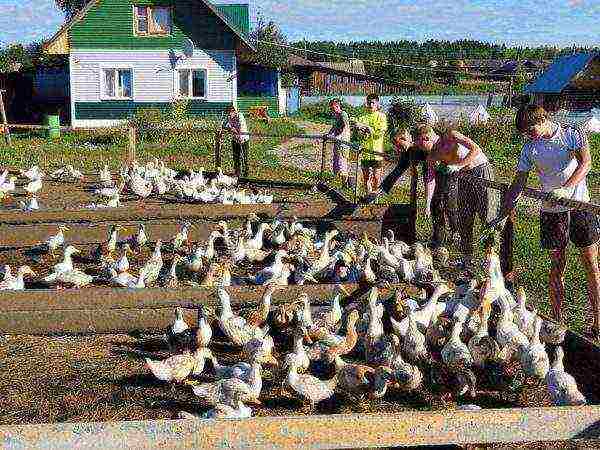 Duck keeping. Ducks outdoors behind a hedge
Duck keeping. Ducks outdoors behind a hedge
How to feed ducklings: compound feed, mash and vitamins with your own hands
The scheme for feeding ducklings at home for beginners is simple. Youngsters quickly get used to receiving food at the same time. Therefore, you do not have to teach them in addition to a specific diet. Ducklings grow and gain weight quickly. At the age of three weeks, he weighs about half a kilogram, after six weeks his weight is on average one and a half kilograms, and at 2.5 months he can already be slaughtered, since his weight reaches two and a half kilograms.
But it is better to slaughter them before the onset of frost, since in summer and autumn the main diet of ducks is greens and everything that they themselves find on the pond. That is, you have to spend little on food.
Feeding in the first days of life
Feeding ducks at home in the first week occurs 6-8 times during the day. A schedule can be made so that the first feed is early in the morning and the last feed before dusk. Finely crumbled boiled eggs, low-fat cottage cheese, and other milk-based products are the main diet of ducklings during this period.
It is advisable to give food from narrow troughs, since wide dishes in the form of a brazier contribute to the fact that the ducklings simply trample the bulk of the food. Drinking bowls should not be placed next to food, as the latter quickly becomes wet and the water dirty.
The fact is that a duck is a waterfowl. At a very young age, she manifests an instinct to eat food, either in water, or to drink it directly after it enters the beak. Thus, if you put the drinker away from the food, the duckling, until it reaches the drinker after eating, will already swallow the bulk of it. In this way, clean water can be kept. By the way, it is recommended to dilute a little potassium permanganate in it, but in such a dosage that it cannot turn the water pink.
After five days, they begin to prepare mash for ducklings from the above products with the addition of ground corn and wheat skins.
As always, care must be taken to keep the water in the drinkers fresh and clean. This is important because dirty and stagnant water carries many diseases.
What food should be given to individuals from one to three weeks?
How to feed small ducks at home? After a week of life, the ducklings are accustomed to greens, because in the future it will become the main food in the diet of these birds. At this age, the duckling eats about 40 grams of various foods. Gradually reduces the proportion of boiled eggs and dairy products, replacing them with large portions of wheat and corn skins. The diet is supplemented with animal feed: fish and meat and bone meal.
By the age of two weeks, the duckling needs about 60 grams per head. By this period, boiled eggs, cottage cheese and other dairy products are completely excluded from the diet. More greens are given instead. Ideally, if it is duckweed. This bird eats it with pleasure in almost unlimited quantities. At the same time, intensive growth and mass gain begins.
It should not be forgotten that a growing duck eats significantly less. After 20 days of age, the ducklings are released into the pond together with the mother duck.
You can use "dry" feeding, in which the main diet will be purchased compound feed for ducklings. In this case, growing them will be more expensive, but ducklings grow faster.
The mash is cooked just before feeding the birds, as wet pre-cooked food will turn sour quickly.
How should ducks be fed from one month of age to slaughter?
How to feed ducks at home in a month? Grinding of various grain crops, millet, meat and bone and fish meal, shells, chalk, sunflower meal, fodder yeast and greens - these are the components that make up the diet of young animals during this period of life.
In addition, grazing them on a pond will diversify food and reduce the cost of maintenance by about 2 times. The total part of the grass in the diet is 40%, greens - 30%. If a duck has the ability to eat duckweed, then the component of greens in the diet increases by one and a half times.
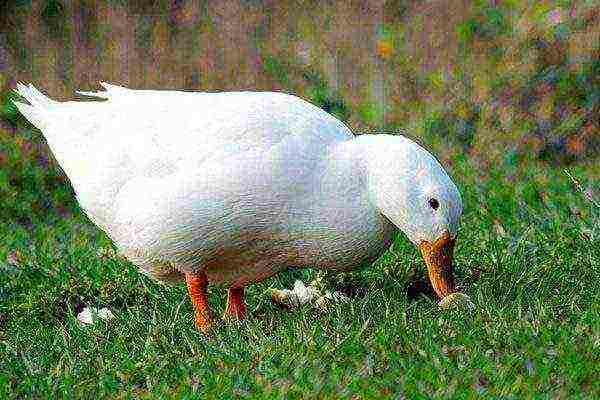 Adult duck looking for food
Adult duck looking for food
How to keep adult ducks at home?
An adult duck (drake), depending on the breed, can weigh from three to four kilograms. The most common breeds of meat duck breeds.
- Beijing: grows and gains weight quickly, tolerates winter well. Two-month-old young animals have a live weight of about 2.5 kg. An adult duck - up to 3.5 kg, and a drake - up to 4 kg. Egg production - up to 110 eggs per year. The meat is delicious.
- Bashkir color: the meat is of excellent quality, it adapts well to new conditions of keeping, the fat content is low. Productivity is high.
- Black white-breasted: the weight of an adult duck is 3-3.5 kg, a drake is up to 4 kg. The meat is delicious. A distinctive feature of this breed is increased egg production - up to 130-140 eggs per year.
- Moscow White: the weight is the same as that of the black white-breasted. The meat is very tender and tasty. Egg production is high - up to 160 pieces per year.
- Gray Ukrainian: live weight of drakes is 3-3.5 kg. Weft - up to 3 kg. Egg production is very high and sometimes reaches 220 pieces per year.
Among the meat, egg and egg breeds, the following can be noted.
- Khaki Campbell - meat and egg breed of ducks. Differs in a calm character. Average egg weight - 75 g, egg production - up to 330 pieces. Drake weight - up to 3 kg, ducks - up to 2.5 kg.
- Indian runner - egg breed. It got its name from its high mobility. Egg production and weight similar to Khaki-Campbell. The meat tastes like chicken.
To decide on the choice of the breed, you need to decide for yourself for what purposes you undertake to breed them. Meat breeds weigh more, egg production is less, in meat-egg and egg breeds - on the contrary. White and French ducks are also good for growing.
The ducks are kept indoors or outdoors. In the first case, they should feed more intensively due to compound feed and low mobility of the bird.
The room should be well ventilated, moderately light and warm. An adult duck tolerates winter well, but it is better that the indoor temperature during this period does not drop below 5 degrees Celsius. For 1 sq. m of the area are bred 4 ducks.
Walking way for this bird is better. But it depends on the ability to do such a walk and the presence of a reservoir. In this case, it is better to split the livestock into small groups - 10-15 heads each, dividing them with low partitions. Of the reservoirs, shallow rivers and lakes are preferred. The walks are fenced off with a low fence. They can be made adjacent to the poultry houses so that the ducks can hide in a covered area if they wish.
 Adult ducks on a walk by the pond
Adult ducks on a walk by the pond
The feed is the same as for the young. Emphasis is placed on the grains of cereals and corn, with more corn in the composition. Do not give ducks bread crumb, which negatively affects the digestive system of the bird.
It is also forbidden to give not fresh mash. In general, if there is a suspicion about the quality of the feed, it is better to refrain from feeding it to the bird. Do not forget to give green mass or release it for walking in the pasture, if there is no reservoir nearby. If there are nearby rates or a lake - drive them there. On it, ducks will find the bulk of their food.
If you feed the ducks with non-purchased compound feed, then their composition may be as follows:
- 40% of rubbing a mixture of grain crops, of which at least half is corn;
- 30% green mass;
- 10% grain waste;
- 7% cake and meal;
- 7% animal feed;
- 6% shells, chalk, feed yeast, vitamins, mineral supplements, etc.
It is very important to give vitamins to ducklings and adult ducks, especially in the autumn-winter and winter-spring periods, when there is not enough sunlight and there is no greenery at all. If it is problematic to buy vitamins, you can use brewer's yeast, which contain a lot of proteins, carbohydrates and fiber.
Breeding ducks is no big deal. The main thing at the initial stage of their cultivation is to be attentive to the feeding processes, to give balanced food and to find a place for them to walk and a reservoir for them. Then not only will your family have tender and tasty meat, but you will also be able to cover the costs of keeping this bird with interest by selling the surplus of products.
When breeding ducks, you need to figure out in advance how and what to feed your poultry. If a poultry farmer buys eggs for hatching in an incubator, or takes day-old chicks, he should additionally figure out how to raise ducklings at home, what to feed?
How to raise ducklings at home, what to feed?
Feeding and caring for adults
A well-formed diet is essential for good weight gain, improved egg production and prevention of poultry disease. Every day, ducks should eat:
- cereals;
- vegetables;
- succulent herbs;
- sand;
- animal feed;
- seashells;
- chalk.
Organization of feeding ducks
Females and males are given:
- chopped corn, legumes, crushed barley, oats, wheat;
- meal and cake obtained from oil plants;
- potato waste;
- beet cake;
- bran;
- aquatic plants (elodia, duckweed);
- juicy greens: cut clover, peas, young nettles, alfalfa;
- combined silage (juicy herbs, pumpkin, beets, carrots are used for cooking);
- grated vegetables;
- fish and meat and bone meal;
- dairy products.
The diet will depend on the season and the purpose for which the bird is grown. The menu for laying hens is significantly different from the menu for ducks, which are fattened for meat or left to the parent flock.
It should not be too hot in the house during the summer.
But it is necessary to monitor not only that the food is complete and balanced. It is important to understand the conditions for keeping poultry. The house should be warm during the cold season and cool during the summer heat. The egg production of females directly depends on temperature, and the duration of daylight hours also affects it. The number of eggs laid is significantly reduced if the females are kept in damp and dirty rooms.
In the poultry house, a bedding about 30 cm thick is made on the floor. For its preparation in the summer, straw, peat, wood chips, sedge are harvested and dried well.
Keeping ducks with chicks
Ducks need space to walk: it is desirable that the birds have the opportunity to swim in bodies of water. In the absence of such conditions on the ground, containers with water are installed in which they will swim. An aviary for birds is necessary not only in the summer, but also in the winter. In the cold, ducks are taken out for a walk in areas cleared of snow. Frosting of the paws can be prevented by covering the ground with a dense layer of straw.
Duck with ducklings for a walk
During the period of walking on the street, poultry farmers clean and ventilate the poultry house. Compliance with the requirements for care and feeding allows you to maintain a healthy duck flock, to ensure good weight gain and excellent productivity. If the poultry farmer decided to start fattening ducks for meat, then it is important to draw up the menu correctly from the first day of the ducks' life.
How to compose a diet for ducklings?
First of all, the poultry farmer must decide what exactly he wants to feed the emerging brood. It is allowed to use granulated feed or a complete mixture from the first days of life.
Newborns need protein foods. They are given:
- boiled eggs;
- fat-free cottage cheese;
- other fermented milk products.
On the first day, the chicks are soldered with a manganese solution or mild antibiotics. This is done to prevent mass deaths from common infections and to increase defenses.
Feeding chicks
Poultry farmers should understand that chicks purchased from a poultry farm will not eat normal homemade food well. It is better for them to give compound feed, otherwise it will not be possible to quickly fatten such ducklings for meat. Chicks that were bred at home, especially those kept with a brooding duck, are given standard homemade food from day one.
When drawing up the menu, it is necessary to take into account the following nuances when feeding at home:
- during the first 6 days, food is given up to 8 times a day;
- from 7 to 15 days, the number of feedings is reduced to 6;
- from 16 to 30 - reduced to 5;
- from 31 to 4.
When feeding with a special balanced compound feed, it is not recommended to give vitamin and mineral supplements separately. The feed is poured so that it always remains in the trough after a meal. This will be a guarantee that the young are eating their fill. Separately put in containers sand, crushed shell, fine gravel, chalk.
Chalk feed
In the first 2-3 days, the farmer makes sure that there are no hungry chicks left. Otherwise, the death of young animals from hunger cannot be avoided. Individuals that do not eat on their own have to be force-fed. Initially, a weak solution of manganese is instilled with a pipette. A crushed egg is poured near the place where the starving birds are sitting.
Important! If the ducklings do not start to eat on their own, then experts advise poultry farmers to dilute the yolk with milk to a mushy state. The resulting mixture is fed to hungry babies through a pipette. Usually, once is enough for the ducklings to start feeding on their own.
From day 3 (some even recommend doing this from day 2), the chicks begin to be fed with mash made from green onions, corn or semolina. They also add a boiled egg.
Feed mix
Some experts recommend starting to add green food from 3-4 days, others advise to wait until two weeks of age. At the beginning, greens should be about 10-15% of the total amount of food. In this case, you should monitor the bowel movements. With diarrhea, the menu is revised.
By the age of two weeks, the diet expands. Chicks are fed with what adults do. The only difference is the amount of feed.
But it is not necessary to prepare your own formula for feeding. Many people go the other way: they buy ready-made compound feed. It contains all the required trace elements and vitamins. Some compound feeds contain antibiotics and medicines intended for the prevention of many diseases.
Compound feed for birds
With a mixed diet, it is allowed to pour a mash three times a day, and in the evening - mixed feed. Herbs, grated vegetables, fruits are added between feedings. Weeds plucked from the garden are used as juicy forages.
Experienced poultry farmers recommend feeding newborns with nipple drinkers. This will prevent stagnant water. But small containers of water should be placed separately: they are needed to wash the beaks.
Drinking bowls for ducklings
When feeding at home, it is recommended to add vitamin complexes to food. They give fish oil, concentrates of vitamins A and D. Purchased mineral supplements are replaced with ground shells and chalk. An unbalanced diet and a lack of vitamins leads to poor weight gain and the appearance of diseases.
Fish fat
Common mistakes
Knowing about the need to add animal feed and grain production waste to the diet, some breeders begin to give large quantities of fish or bread. But fish is added to the feed not earlier than 5 days of life, and it is better to wait with bread. It provokes fermentation in the stomach and can even lead to the death of young animals.
Bread provokes fermentation in the stomach of young animals
Some novice poultry farmers do not properly prepare mash.They should not be pasty, too runny or sticky. When eating such mixtures, the nasal openings of the chicks can be clogged, and this is fraught with the appearance of unpleasant consequences.
You can avoid mistakes if you know how to properly expand the diet, figure out when and what to feed young ducks.
Feeding chicks of different ages
If you feed the ducklings with compound feed, then there are no questions. It is enough to figure out how much you need to pour on each head.
- At the age of 1 to 10 days, 25 g of compound feed is enough.
- Ducklings aged 11-20 days are given about 70 g.
- Chicks aged 21 to 30 days are supposed to pour 110 grams.
The process of feeding the young
But many farmers are interested in the peculiarities of making homemade feed. The optimal composition of the feed mixture for ducklings is shown in the table.
| Boiled eggs (up to 3 days of age) | 3 | — | — | — |
| Juicy greens (finely chopped) in summer | 15 | 50 | 90 | 90 |
| Cottage cheese | 3 | — | — | — |
| Duckweed | — | 15 | — | — |
| Silo (in winter) | — | 10 | 20 | 20 |
| Food waste | — | 15 | 40 | 50 |
| Boiled potatoes | — | 10 | 40 | 60-80 |
| Wheat bran | 5 | 10 | 30 | 40 |
| Milled cereals (barley, corn, oats) | 2 | 40 | 55 | 80-100 |
| Curtains and cake of oil crops | 1 | 3 | 7 | 15-20 |
| Grain waste (shit) | — | 20 | 30 | 50 |
| Yeast | 0,2 | 0,3 | 1 | 1 |
| Chalk (seashells) | 1 | 2 | 4 | 6 |
| Bone, fish meal | 0,5 | 1,2 | 4 | 6 |
| Salt | — | 0,2 | 0,4 | 1 |
| Fine gravel | — | 0,5 | 1 | 1 |
| Skim milk | 5 | 15 | 20 | — |
Weight gain indicates proper feeding. So, by 10 days healthy ducklings should weigh 200, by 20 - 500, and by 30 - 800 grams. Fattening for meat lasts only 2-2.5 months. Grown-up individuals weighing 2 kg or more are slaughtered. But for a good set, not only proper feeding is important, but also caring for the bird.
Features of breeding and raising ducklings at home for beginners
Having received offspring from eggs or buying day old ducklings, you should figure out how they need to be kept. The main requirement is to provide heat. If the chicks are kept in a box or basin, then a bedding should be made on the floor (you can put a piece of cloth or a disposable diaper). An incandescent lamp is hung from above so that the young cannot reach it. If the ducklings get cold, they will clump together under the light bulb.
Ducklings in a brooder
In the first 5 days, it is necessary to maintain the temperature at the level of 26-28 ° C, from 6 to 11 days, 22-26 ° C is enough, and by the 20th day it can be reduced to 18 ° C. Monthly birds can live at a temperature of 16 ° C.
From two weeks of age, ducklings can be bathed. They are not immediately released into open water bodies, they are placed in a container with heated water in which they will swim. But with long swims, the chicks can get overcooled and get wet. Therefore, the farmer is closely monitoring the bathing time.
Features of keeping young ducks
But you should not worry about the kids who are with the hen. The duck itself provides them with the necessary heating and leads them to swim from the 3rd day of life. The hen lubricates the wards with fat, which prevents them from getting wet. But it is advisable for the poultry farmer to ensure that only hatched babies are in the water for no more than half an hour.
Video - How to raise healthy ducklings
Poultry farmers should know the peculiarities of growing poultry on free land and water ranges.
Fattening and keeping on free grazing without reservoirs
In the summer, many people practice fattening birds for meat on land. On the fenced off site, special sheds are installed for young animals. Novice poultry breeders should understand the recommended size of fences: the fence should be at least 1 meter high.
Important! For overland maintenance, a good water supply is required. Water must be available at any time of the day. If there is no water, then appetite worsens, the rate of weight gain decreases.
It is also necessary to ensure that the ducklings have the opportunity to hide from the scorching rays. In the absence of natural shade (for example, from trees), special shelters are made. Experienced poultry farmers advise doing double walks - from the north and south sides. This allows the young to find the coolest places for themselves.
Container for washing beaks and bathing
Particular attention is paid to the cleanliness and dryness of the places of detention. Even in the rainy season, birds are not allowed to have wet bedding or get dirty in the mud. Otherwise, at the time of slaughter, there will be podoprevnye feathers on the chest.
Proper installation of the drinkers helps to ensure dryness. It is better to place them behind the net so that the birds have to pull their heads through the holes. This will prevent splashing water in the area where you are walking.
Drinker placement option
Free-range ducklings are fed at least 4 times. They are advised to sprinkle mash with whey or yogurt. Also, separate containers should always contain shells, small gravel. The menu for chicks in free overland housing does not differ from the menu for chicks who have access to swimming ponds.
Fattening and keeping on free grazing with a pond
Experienced poultry farmers recommend providing access to water bodies for ducklings in the summer. But water enclosures should be fenced 50 cm above the water level and 70 cm down. The underwater fencing is necessary so that the ducks do not have the opportunity to dive in and swim away. They build fences from metal nets, slats, or even fishing nets.
The size of overland and water walks is approximately the same. Sheds are placed on the land side. Their length and width are determined based on the number of birds kept.
Mash for ducklings
In the area where streams flow, walks are organized near them. You can fence off plots and put fences on either side of the stream. Thus, double walking is formed. But feeders are placed on one bank, the other side is intended for birds to rest.
As in the case of overland keeping, grown ducks are fed 3 times with mash. Grain is poured into the evening feeding. Intensive feeding and proper keeping conditions allow them to be slaughtered for meat at the age of 50-70 days.
Feeding meat ducks at home
From the first days of life, ducklings should have a correct diet. With a competent approach, they gain at least 2 kg of weight in 2 months. Young animals at the age of 2-3 months are distinguished by excellent taste characteristics, so most of the grown ducklings are slaughtered.
Fattening ducks
In the early days, the chicks are given protein foods: boiled eggs, cottage cheese. Poultry farmers need to check the freshness of the food, because the digestive system of young animals is sensitive.
Low fat cottage cheese is a good source of protein for ducks
To fatten the flock, they adhere to the standard ration for young animals. An approximate diet of young ducks, which are raised for meat, is shown in the table.
| Juicy greens | 20-40 (depending on age) |
| Barley (crushed grains) | Up to 20 |
| Shredded corn | Up to 20 |
| Grain waste | Up to 25 |
| Wheat bran | Up to 20 |
| Meat and fish meal | Up to 15 |
| Chalk, shell | Up to 1 |
When breeding ducks, you need to figure out in advance how and what to feed your poultry.
When breeding ducks, you need to figure out in advance how and what to feed your poultry.
Read also: Indoor meat breed
Indoor meat breeds are becoming increasingly popular among poultry farmers. The peculiarities of this breed allow both experienced farmers and novice bird breeders to breed it.
For each kilogram of live weight gain, it is necessary to feed about 4 kg of feed.
Attention! The older the ducks get, the more fresh greens are included in their diet. If at the age of 1.5 months, juicy green fodder gives no more than 30%, then by 2 months of age their number increases to 40%.
Duck mash
The preparation of mash is considered mandatory (with the exception of those cases when the bird is fed with a balanced compound feed). They are given twice a day: on the first morning feeding and in the afternoon. For the preparation of wet mash, the following components are taken:
- corn, wheat, pea, barley groats in equal amounts;
- reverse, whey or yogurt.
Read also: Broiler ducks
Breeding broiler ducks is one of the most affordable and simple ways to increase the profitability of your farm. An overview of the varieties of ducks, feeding, care, building a duck house with your own hands and arranging it.
But many do not stop there, adding zucchini, pumpkin, boiled small potatoes, carrots, cabbage and other root vegetables to the mash. This has a positive effect on the state of health, because the body of the birds is saturated with vitamins and the young quickly gain weight. You can speed up the set if you pour crushed grains in the evening feeding. It is a high-energy food that contains protein.
Boiled potatoes
In the hottest period, the feeding regime is changed. In the heat, birds lose their appetite, they stop eating normally. The situation can be corrected by pouring food into the feeders before dawn (around 3 a.m.), the last feeding is carried out at dusk. Wet mash can be poured in the evening: the birds will eat them at night. This provides excellent weight gain.
Duck grain
On a note! Feeding begins 2 weeks before the planned date of slaughter. The wefts are restrained in movement. At the same time, the amount of protein food is increased in the diet: peas are added in large quantities, and cottage cheese is added again. The amount of food is increased in the last week, with special emphasis on feeding mash and boiled potatoes. Such a diet contributes to the intense formation of body fat.
Domestic ducks are not picky. They can be given any feed, the main thing is to monitor their freshness. Experienced poultry farmers say this is a profitable business. Young animals rarely get sick and gain weight in record time.
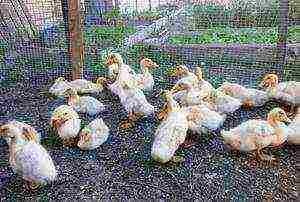 Backyard owners have long understood the benefits of raising ducks for meat in the household. Unlike broilers, turkeys and other poultry, duck rearing is less difficult, since ducklings grow very quickly, are hardy, have good immunity, and even if the conditions are violated, they practically do not get sick. No less valuable is the fact that adult ducks tolerate winter cold well, and this greatly simplifies and reduces the cost of their maintenance.
Backyard owners have long understood the benefits of raising ducks for meat in the household. Unlike broilers, turkeys and other poultry, duck rearing is less difficult, since ducklings grow very quickly, are hardy, have good immunity, and even if the conditions are violated, they practically do not get sick. No less valuable is the fact that adult ducks tolerate winter cold well, and this greatly simplifies and reduces the cost of their maintenance.
How to care for ducklings?
Caring for different breeds of ducklings, in principle, has no differences and consists in following simple rules for their maintenance.
Room preparation
The first question that a novice farmer has is where to keep the bird? It is impossible to give a universal answer to it. It is decided individually in each specific case and depends on the conditions in which the poultry farmer is and on the planned number of poultry heads for fattening. If there is no special room for keeping ducks, then home buildings and sheds can be used.
Special attention must be paid to the preparation of the ducklings. If a shed is used, then before growing it must be freed from unnecessary items, cleaned, and repaired. Whitewash with lime for disinfection. Prepare equipment and inventory, repair it in a home workshop. It is also advisable to cover the floor with lime up to 3 cm and lay a layer of straw up to 15 cm thick. Fill up the holes. Ventilation is required in the duckhouse, but there should be no drafts. In the first weeks, while the chicks are small, they can be kept in a specially made brooder. And if there are few birds, then in any suitable wooden or cardboard box.
If the ducklings are brought by a domestic duck, then it is not necessary to place it with chicks in a brooder. They will feel good with the duck on the duck bed. The chicks will be warmed, watered and fed. The hen is a good helper for the poultry farmer. But if the ducklings are purchased in an incubator, then the care of drinking and feeding will fall on the shoulders of the poultry farmer. In order for there to be fewer problems when growing poultry, you need to select strong and healthy individuals immediately upon purchase.
What should you look for when buying a duck?
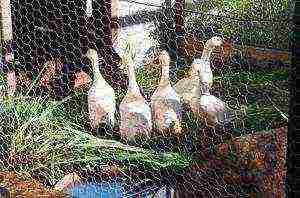 he must be confident on his feet;
he must be confident on his feet;- the fluff should be shiny and well fluffed;
- eyes should be shiny and prominent;
- the abdomen should be retracted and the umbilical cord well healed.
Caring for ducklings in the first two weeks
Ducklings are very sensitive to temperature extremes and require special rearing conditions in the beginning. For them, as for any young poultry, in the first two weeks it is necessary keep the temperature highto keep them very warm. The optimal temperature for ducklings for the first days of life should be maintained in the range from 28 to 33 ° C. For this, an electric lighting lamp is used. It is desirable that it be a special thermal electric lamp. Depending on the spectrum of radiation, they are white and red. For the prevention of pecking of ducklings, it is better to take a red lamp. You can also use a conventional 100-150 watt light bulb.
In the box where the ducklings are kept, you need to place a thermometer and observe the temperature and behavior of the ducklings themselves. If the ducklings are active, do not huddle together, do not stray into corners, actively run, eat, drink, then the temperature is normal for them and everything is fine with them. If the ducklings huddle together and cuddle, to each other it means they are cold.
- Note! It must be remembered that strangling from the cold in a bunch, stronger ducklings can involuntarily strangle weakened chicks.
The other extreme is possible - overheating of ducklings... In this case, they drink a lot, eat poorly, can lie with an open beak and heavy breathing. If urgent measures are not taken, both extremes can lead to the death of part or all of the brood.
Temperature control, hardening
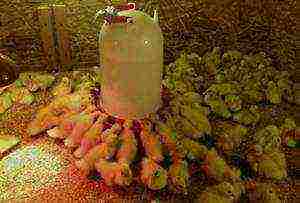 Noticing that the ducklings are cold, you need to lower the lamp lower, closer to the floor. Finding that they are too hot - the lamp needs to be raised... If there are not many ducklings in the brooder - 30-50 heads, then one such lamp is enough. It heats well and has a significant heating radius. With a large livestock, to heat them, it is necessary to use several lamps at the rate of about 1 lamp for about 50 ducklings.
Noticing that the ducklings are cold, you need to lower the lamp lower, closer to the floor. Finding that they are too hot - the lamp needs to be raised... If there are not many ducklings in the brooder - 30-50 heads, then one such lamp is enough. It heats well and has a significant heating radius. With a large livestock, to heat them, it is necessary to use several lamps at the rate of about 1 lamp for about 50 ducklings.
After a week, you need to start the hardening process. To do this, the temperature must be lowered by 1 degree every day, until it is brought to a room temperature of 24-26 degrees. After two weeks, the ducklings can already do without additional heating. They are left only with additional electric lighting, if there is not enough daylight. In order to accustom them to the natural change of time of day, the lighting is turned off at night.
Litter
- Note! It should be borne in mind that, despite the good immunity of ducks, due to poor-quality and damp bedding, they can become seriously ill.
To prevent this from happening, it must be carefully selected and changed frequently. Most suitable for ducks is litter in the form of chopped straw or sawdust. But the sawdust is large, close to the shavings. It is impossible to use small sawdust, as the ducklings will eat them and may get sick or die.
If there are few ducklings and they are kept in a small box, then some poultry farmers use baby paper diapers instead of bedding in the first two weeks. These can be purchased at the pharmacy. They absorb moisture well, change quickly and are very comfortable. But they require financial costs.
Very convenient brooder with a mesh bottom 1x1 cm... The discharge falls into the pallet and the ducklings are clean. This is the best prevention of all diseases that arise from sewage and dampness. In addition, the use of such a box practically frees the poultry farmer from the need to constantly clean it of droppings. To do this, a container is installed on the floor under the brooder or a sheet is spread, according to the size of the box for ducklings, and as it is filled, cleaning is performed.
Feeding and drinking
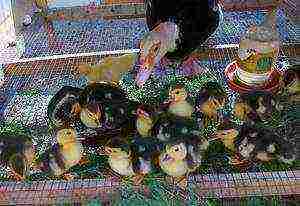 Most often, the ducklings do not eat for the first time in a day. They only drink. It is very important to water the ducklings as soon as they hatch or appear in the house.You need to drink clean boiled water... After a week, you can already give just tap. Experts recommend to immediately drink the ducklings with a weak solution of potassium permanganate to prevent gastric disorders.
Most often, the ducklings do not eat for the first time in a day. They only drink. It is very important to water the ducklings as soon as they hatch or appear in the house.You need to drink clean boiled water... After a week, you can already give just tap. Experts recommend to immediately drink the ducklings with a weak solution of potassium permanganate to prevent gastric disorders.
On the second day, if the ducklings are not yet eating, you can stimulate them to do so. Some poultry farmers add chickens to them for this. From the first day they are already actively eating and the ducklings, looking at them, also begin to eat. You can put light-colored food on a dark sheet or plate and tap to draw the ducklings' attention to the food. For the same purpose, poultry farmers sometimes use this technique: they sprinkle food on the backs of the ducklings and they begin to peck it off each other. Usually, on the second day, the ducklings start to eat well, and they have no problems with appetite.
Many poultry farmers recommend giving chopped boiled eggs, cottage cheese, loose boiled cereals. It is safer to use high-quality starter feed. The starter feed for broilers gives very good results. Ducklings start to grow and develop very well.
For drinking, usually vacuum drinkers are used... They keep the ducklings from getting wet and allow them to rinse their nose. Chicks quickly master nipple drinkers, but not from the first day.
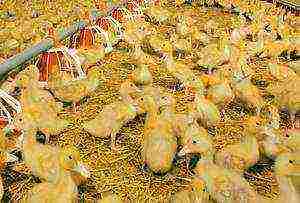 Note! In the first month, you should not give them water in a deep bowl, since their sebaceous glands do not work yet, the fluff is not saturated with fat and gets wet. In this case, the duckling will fall ill or may drown.
Note! In the first month, you should not give them water in a deep bowl, since their sebaceous glands do not work yet, the fluff is not saturated with fat and gets wet. In this case, the duckling will fall ill or may drown.- Advice. For better growth, from the beginning of the second month, you can substitute a container with bathing water for them. It is recommended to deepen it to ground level — there will be less dirt.
From the first days of life, vitamins can be added to the water for ducklings. In the second week, you can already give green food: finely chopped nettles, dandelions, alfalfa, clover, green onions. It is a storehouse of vitamins, especially nettle and dandelion. If they eat enough greens every day, they do not need to feed them additional vitamins.
If it is impossible to use compound feed in the future, or in order to save money, from 30 days of age, you need to gradually transfer from compound feed to any mixture. It can be wheat, barley and corn, crushed and mixed in equal proportions. You can add a little compound feed for the smell. If you have a grain grinder, then such a mixture is not difficult to prepare at home. After the bird gets used to the grain mixture, the feed can be omitted. After a month, the birds can already be released from the brooder to the walking yard and continue to feed as usual. The ducks are given a dry and slightly moistened grain mixture. Food waste is also used.
Features of feeding the Peking duck
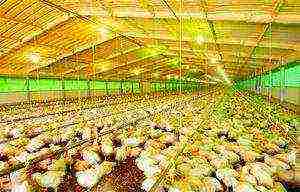 This duck is considered the most productive and fastest growing. Her feeding has some peculiarities. It reaches its optimum weight in 50-55 days. Above this period, the molting period begins, and the duck dramatically loses weight. To feed her in two months, already from a very young age, you need good nutrition, greens and always protein feed. It can be meat and bone meal or fish bone meal, fish oil.
This duck is considered the most productive and fastest growing. Her feeding has some peculiarities. It reaches its optimum weight in 50-55 days. Above this period, the molting period begins, and the duck dramatically loses weight. To feed her in two months, already from a very young age, you need good nutrition, greens and always protein feed. It can be meat and bone meal or fish bone meal, fish oil.
The Peking duck is very voracious and eats a lot. To get a good result, you need to make sure that the food troughs are constantly filled. They have a very short intestinal tract. For 3-4 hours food completely passes through it and the duck wants to eat again.
Following these tips will allow in a short period of time to grow a bird weighing up to 3-4 kg. This is 1-1.5 kg more than ducks of other breeds. In addition, you can get high-quality down from it, which is not inferior to goose down.
A big plus in keeping ducks is that they are undemanding to feed. Everyone eats at any time of the year. If you show love for these birds, study and follow the rules for caring for them, then the work invested in keeping ducks in the household will certainly bring the poultry farmer a significant income to the family budget.
>
Breeding ducks at home is not difficult.These birds are so unpretentious and undemanding that even a beginner can cope with their maintenance. Ducks do not need huge areas for walking and spacious poultry houses - in a small summer cottage with an area of 60–70 m2, you can grow up to 150 birds. Birds reproduce quickly, hatch offspring well and gain weight rapidly. This is why the duck farm is going to be a very profitable business.
Breeding ducks
To get the most out of breeding ducks, you need to know all the features of their keeping and breeding.
Breed selection
Before you buy ducklings, you should decide on the breed. The most popular are:
- Peking duck;
- musk duck (indoutka);
- duck mulard.
The choice of breed depends on what goal you set for your farm.
Selection and keeping of ducks
Peking duck
If you want your poultry farm to bring not only meat products, but also eggs, pay attention to the Peking duck. This breed is considered very popular and is perfect for home breeding. The main advantage of the Peking duck is its high fertility. One female is capable of producing up to 100 heads of offspring per year.
Peking ducks
Features of Peking Duck:
- fast weight gain and unpretentiousness;
- ducklings weight at 2 months - 2.5 kg;
- the weight of females is 3 kg, the weight of males is 4 kg;
Peking duck (adult)
- slaughter yield - 85–90% of the weight of an individual, edible part - 60–65%;
- high egg production of females (up to 150 eggs per year);
- fatty harsh meat.
Peking duck
The note! Ducklings are sent to slaughter at two months of age, before the first molt. Why? Yes, because changing down to feathers will ruin the appearance of the carcass. In addition, during the molting period, birds eat a lot, but do not gain weight at all. The slaughter of two-month-old ducklings is beneficial: if the feeding was plentiful and balanced, then at this age they just reach the marketable weight of 2.5 kg.
Indoor
Indoor or musk duck
Indo-ducks grow much more slowly than Peking ducks: their chicks gain marketable weight of 2.5 kg only at the age of 3–3.5 months. However, it is this breed that is considered the most suitable for breeding in medium-sized home farms. Indo-ducks, vaguely resembling turkeys, almost do not cause trouble for their owner: they rarely get sick, do not fight and do not make noise.
Indo-women: content
Indoor features:
- the weight of ducklings at 3 months is 2.5 kg;
- low egg production of females (70–120 eggs per year);
- the weight of females is 3 kg, the weight of males is 6 kg;
- soft tender meat with a small amount of fat.
The note! This is one of the few breeds of domestic ducks that can fly well. Indo-girls have a craving for air travel in the spring, so their wings are clipped without fail. If this is not done, the bird may be at a distance of 100–300 m from the farm.
Duck mulard
Ducks Mulard
Mulard is the result of crossing Indo-Ducks with Peking ducks. This hybrid inherits the best qualities of both breeds: fast weight gain and soft meat with a low percentage of adipose tissue. However, the mulard is not able to bear offspring. Therefore, birds of this breed should be started by farmers who are focused on obtaining quality meat products.
Mulard breeding: profitability
Duck keeping
Duck room
Choosing a place for a poultry house
The poultry house is a room in which ducks will stay at night and during the frost period. Any building located on the territory of the site can become a poultry house, for example, a barn or a cowshed. It is desirable that the building is located on a hill: this will ensure the outflow of rainwater and other precipitation.
In the photo, poultry houses for ducks
The note! By law, a duck farm cannot be located close to residential buildings (the minimum distance is 25 m), since it becomes a source of noise and unpleasant odors. When setting up a poultry house, do not forget about this rule, otherwise you will attract the attention of law enforcement agencies.
Before settling in ducks, the house needs to be prepared:
- it is enough to plaster the log room and caulk all the holes through which drafts and precipitation penetrate;
- a structure made of boards should be upholstered with plywood sheets, plaster, putty and whitewash;
- reed walls should be coated with a mixture of clay and straw.
Try to eliminate all wall defects, cover up holes and fix poorly adhered boards. Birds can hardly tolerate cold, heat and high humidity, so they need a reliable shelter.
House requirements
The poultry house can be small (1 m2 for 5 young animals or 3 adults). Ducks do not require wide areas, and heating and cleaning a small house will be much easier than a huge building.
Requirements for the arrangement of the poultry house
- The floor should rise 25-30 cm above the ground. This will reduce the risk of frostbite in poultry paws and prevent rodents from entering. It is advisable to make it out of concrete: the wooden covering will absorb the waste of the ducks and create conditions for the reproduction of bacteria.
- The bedding should be soft and warm. In winter, sprinkle the floor with a 30 cm layer of well-dried straw, peat or shavings (when preparing bedding, keep in mind that there should be 12 kg of material per adult). In summer, you can do without bedding.
Soft, clean bedding
- The height of the walls can be small - from 1 to 1.8 m. Ducks do not like to perch, so you can do without high ceilings.
- Keep the house warm: do not let the temperature drop to 0 ° C. Determining that ducks are freezing is not difficult: at low temperatures, they huddle together and stop eating. In unfavorable conditions, birds feel uncomfortable and stop rushing.
- The structure should be protected from moisture and ensure good ventilation. Overheating of the room and stuffiness will not benefit the birds. When the air temperature is too high, ducks breathe frequently, drink a lot and look disheveled; this can adversely affect their egg production.
- The duration of daylight hours should be at least 14 hours. In order not to make large windows in the poultry house, sufficient illumination can be maintained using artificial devices.
Duckling lamp
- The exit from the house should be a 40 × 40 cm hole. Place it in the southern or southeastern part of the building and protect it from drafts and precipitation with a thick curtain or wooden door. For the same purpose, you can build a small "vestibule".
- Keep the house clean and dry at all times. The ideal air humidity is 65–70%. High humidity will cause ducks to stop gaining weight, lose feathers, and get sick.
Walking space
In the summertime, ducks need daily walks. This means that the farmer will have to build a walking area.
Fenced walk
Walking space requirements:
- a small area where birds can walk without interfering with each other;
- the space should be on a hill so that during the rains the soil does not turn into a swamp;
- the fence must be made of a metal or fishing net (its height is at least 1 m).
Walking fenced with a net
On summer days, birds can be on the walk all day. They do not need to be fed: they can get all the necessary food on their own.
Winter walking
Keeping ducks in winter
In winter, birds also need to organize short walks. To do this, clear a small area of snow, cover it with straw and let the ducks go for a walk. Since there are no grass and insects in winter, it is worth taking out feeders to the territory.
On a calm day, if the air temperature does not drop below -10 ° C, ducks can walk for a long time. But if the temperature drops or a piercing north wind blows, it is better to refuse to walk.
Pond
Ducks are water birds, so the green shores of a small natural reservoir will be an ideal walking place for them.There they will be able not only to walk in conditions close to their natural habitat, but also to eat duckweed, small crustaceans and fish. On hot days, ducks will swim in cool water, so the owner of the farm does not have to build special shelters.
The advantages of such a walk:
- young birds gain weight faster;
- puberty in ducklings occurs earlier;
- the possibility of obesity is excluded;
- birds eat natural food and drink as much water as they need.
The note! Walking on the banks of the reservoir allows you to reduce the cost of keeping birds by 5 times! It is enough for the farmer to release the ducks for a walk in the morning, and in the evening to drive them into the poultry house, having previously fed them with a small amount of compound feed
Ducks on the pond
a.
Pond with ducks
Pond requirements:
- it should not be swampy and heavily silted;
- trees should be planted around, which will give shade;
- the space of the pond must be fenced off with a net (50 cm up from the surface of the water and 70 cm down) so that the birds do not swim away.
If there is no natural pond or river nearby, you can build an artificial pool near the entrance to the house.
How to make a pond for ducks
Equipment
The duck farm must be provided with the following equipment:
- Feeders. For ducks, wooden feeders made of boards at least 2 cm wide and with a special bar on top are suitable. They are installed on the floor: the bar will not allow birds to trample and pour out food, and during harvesting it can be used as a handle. Make a separate feeder for mineral additives: divide the tray with thin boards into 3-4 sections so that different additives - shells, gravel, limestone - do not mix;
Duck feeder
Large feeder for geese and ducks
- Drinking bowls. Ducks consume a lot of liquid, so drinkers should be comfortable and roomy (at the rate of 0.6 liters of water per 1 individual daily). It is desirable that they be made of metal or wood. The ideal drinker height is 20 cm: such high sides will prevent birds from contaminating the water;
The Pekino drinker is protected from overflow, equipped with a return gutter and a pendulum for supplying water upon request of the bird
- Nests. Several nests should be built at the side or rear wall of the house (at the rate of 1 nest for 3 females) where the birds can lay eggs. From plywood or planks, make 50 x 40 x 50 cm boxes, fill them with soft hay and place them in the quietest and shaded part of the house. Access to them must be free, otherwise you will not be able to pick up eggs and remove droppings;
Ducks nests
- Incubators. Ducks are good brood hens. However, with natural incubation, part of the chicks is inevitably lost. To minimize waste, buy a professional incubator.
Incubation of eggs
Breeding
Formation of the parent herd
Breeding ducks - forming a herd
For the parent flock, healthy birds of the same age and weight, without physical defects, are selected. There should be 1 male for 5–8 females.
Selection principles:
- for further breeding, ducklings are left that hatched at the end of summer (in July and August), in September, January or May;
- birds should be about 150 days old;
- there should be no hybrid individuals among the ducklings;
- leave ducklings with a well-developed body and strong bones;
- birds should be mobile and energetic;
- the optimal weight of females is 3 kg, of males - 3.3 kg;
- chicks should have already survived the first molt, the duration of which is 1.5 months.
Only healthy, active ducklings are selected
Birds retain good egg production for 3-4 years. After this, the females must be replaced.
Maintenance of the parent flock
In order for birds to reproduce quickly, they need to provide optimal living conditions:
- daylight hours - at least 16 hours;
- temperature - 18–20 ° C;
- daily replacement of litter in nests;
- calm atmosphere, absence of too bright light and extraneous sounds;
- the diet should include a variety of foods and mineral supplements;
- walking after 10 o'clock in the morning (usually by this time all females have already laid eggs).
Breeding ducks, keeping
If the conditions of detention make the birds uncomfortable, they will stop rushing. To restore normal egg production, you will have to spend a lot of time.
Breeding young animals
Selection of eggs for incubation
To get viable offspring, you should not allow defective eggs to incubate.
Eggs are considered marriage:
- laid in the nest for more than 8 days;
- exposed to low (below 8 ° C) or high (above 12 ° C) temperatures;
- damaged, bruised, irregular in shape or weight (less than 100 g);
- with a bluish tinge of the shell and an unpleasant odor.
Before placing eggs in the incubator, it is advisable to check them with an ovoscope. This way you can identify spoiled eggs and remove them from the rest in time.
Incubation
Ducklings in the nest - photo
There are two ways to bring out chicks - as a result of natural incubation or using an incubator. The choice is up to the owner of the duck herd. If you breed an Indo-duck, then there is no need to resort to the help of an incubator: these birds have a very well developed instinct for incubation. If you keep a herd of Peking ducks, then artificial incubation is indispensable.
Before placing eggs under the duck, you need to identify a bird that is ready to hatch. This is not difficult: the future hen spends a long time in the nest, rakes up the straw with its beak and paws, pulls out the fluff and insulates the box with it.
In order not to be mistaken, put a few deceiving eggs on such a duck. If it does not leave the nest, replace them with real ones, prepared for incubation. Remember: there should not be more than 20 eggs per female.
Duck in the nest
It is desirable that the brooding nests are deeper than normal nesting nests. They should be in a calm, dark place so that the female is not frightened by loud sounds. If you have multiple hens, separate them from each other with thin wooden dividers.
With proper incubation, Indo-ducklings will appear in 35 days, and Peking duck ducklings in 28.
Artificial incubation
Artificial hatching of chicks is carried out using special incubators. To get the maximum number of ducklings, you need to carefully monitor the temperature and ventilation. Maintain the temperature at 38 ° C for up to 20 days; then lower it to 30 ° C.
Video - Ovoscopy of duck eggs on the 7-day incubation
Video - Ovoscopy of duck eggs on the 16th day of incubation
If everything is done correctly, then when viewed on an ovoscope, you will notice the following changes:
- on the 8th day, a bloody mesh appears in the egg: this indicates the presence of an embryo;
- on the 21st day, the embryo is clearly visible;
- on the 25th day, you can see the state of the embryo and the features of its development.
During the examination, it is important to identify how well the embryo is developing. If any abnormalities are visible on the ovoscope, the egg is discarded.
Hatched duckling
Young growth care
How to care for ducklings
Selection of young stock after hatching
After hatching, the ducklings should be taken away from the brooding duck: it can crush some of the cubs. When the chicks are completely dry, selection should begin. Not all hatched ducklings are viable. The farmer's task is to identify all sick chicks and eliminate them.
Ducklings with uniformly colored down, soft belly, wings pressed to the body and shiny convex eyes are considered healthy. Only such chicks will develop correctly and quickly.
Little ducklings and duck
Growing
In the first month of life, ducklings should be kept in a warm and dry poultry house, protected from drafts and precipitation (12 individuals per 1 m2). Daylight hours in the first few days should be at least 22 hours; it is gradually reduced and brought to the generally accepted norm - 14 hours.
Caring for day-old ducklings
Optimal temperature conditions. table
| 1-5 | 28-30 |
| 6-10 | 24-26 |
| 10-15 | 22–24 |
| 16-20 | 18-22 |
| 21-30 | 10–16 |
The floor of the house should be covered with soft, chopped straw (cutting length 3–5 cm). It needs to be agitated and dried daily, and changed if dirty. After reaching 30 days of age, the ducklings can be released from the poultry house for free range. When the chicks reach the marketable weight of 2.5–3 kg, they can be slaughtered for meat.
Feeding
Feeding ducks
Feeding adults
The duck is an omnivorous and voracious bird. She with the same appetite devours plant and vegetable waste, grain, fresh grass, zooplankton and small fish. Therefore, if you provide your pets with daily walking in meadows covered with lush vegetation, feed costs will be significantly reduced.
Feeding Muscovy Ducks - Photo
Approximate daily diet for one adult. table
| Grain (oats, barley, wheat) and corn | 155 |
| Bran | 60 |
| Boiled or raw vegetables | 40 |
| Legumes (lentils, peas) | 15 |
| Greens (clover, nettle) | 40 |
| Cooked meat | 11 |
| Bone or fish meal | 4 |
| Salt | 1 |
| Chalk or limestone | 4 |
Feeding is carried out three times a day at the same time. Any change in the feeding schedule will cause the bird to stop rushing and begin to lose feathers.
Feeding ducklings
Newborn ducklings are fed more often than adult birds - up to 15 days of age, they should receive food 7-8 times a day. Then the number of feedings can be reduced up to 4-6 times. When the chicks reach 30 days of age, they are transferred to standard three meals a day.
Ducklings care
Starter compound feed should include various grains and additives:
- 60% corn;
- 20% oats;
- 10% barley;
- 5% soybean meal;
- 5% mineral additives (chalk, shells, meat and fish meal).
All this must be mixed, crushed and wetted. A little boiled potatoes, cottage cheese, eggs and herbs should be added to the mash to make the consistency soft.
Duck farm products
The duck farm allows you to get the following types of products:
- high quality meat, which is appreciated for its peculiar rich taste;
Duck meat
- eggs that are almost never used for food due to their specific taste (used only for incubating young animals);
- duck down, widely used in the manufacture of pillows and blankets;
Duck down
- duck dung is a valuable fertilizer for vegetable gardens;
- young growth, suitable for further breeding.
Young growth
The advantage of a duck farm is wastelessness.
Slaughter of poultry
If you are breeding ducks, then sooner or later you will have to slaughter some of the pets for meat. There are two slaughter methods:
- Chopping off the head. This method of killing a bird is simple and reliable: you need to put the duck on a flat surface, press its head and cut it off from the neck with a sharp movement of a wide knife. Then the bird should be immobilized, hung by its paws and wait until the carcass is bled;
- Puncture of the head through the beak. The bird is placed in a suspended bucket, the bottom of which is equipped with a small diameter hole. The duck's head is threaded through this hole, tightly fixed by hand and a sharp object (awl or narrow knife) is inserted into the bird's mouth. Then they make a sharp movement towards the brain, killing the bird. The slaughtered duck is left in a bucket until the carcass is completely exsanguinated.
The note! Before slaughter, ducks are not fed for 12-18 hours, but they are provided with a large supply of water. This will help cleanse the intestines of the birds and ensure quick and easy butchering of the carcass.
Video - Slaughtering duck
So, breeding ducks is a fun and easy task. Serious material costs will only require the equipment of the poultry house and walking space, after which the business will begin to bring a good income. Selling duck meat can be a good family business.
Video - Subtleties of breeding muscovy ducks
Video - Breeding and keeping ducks in winter
